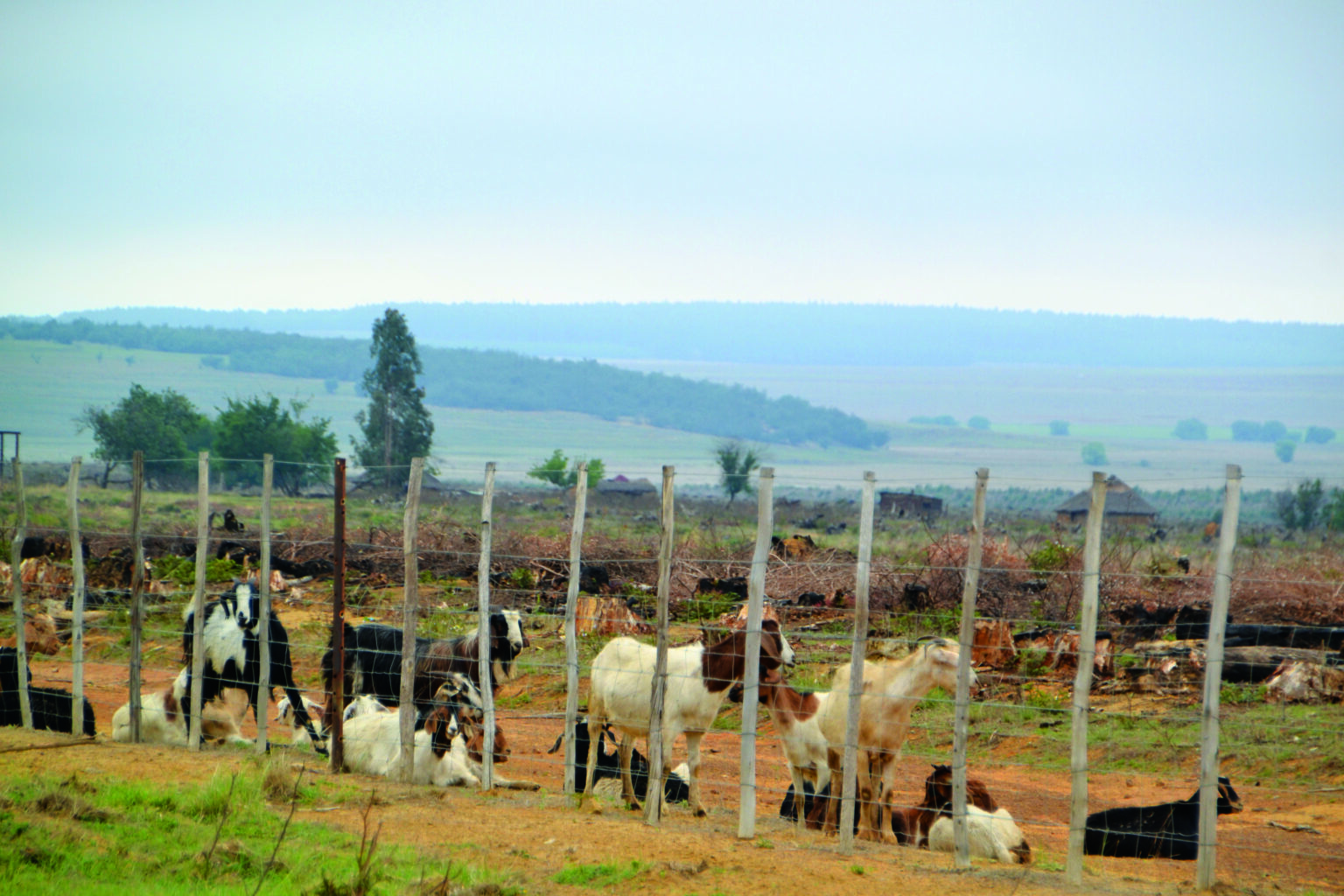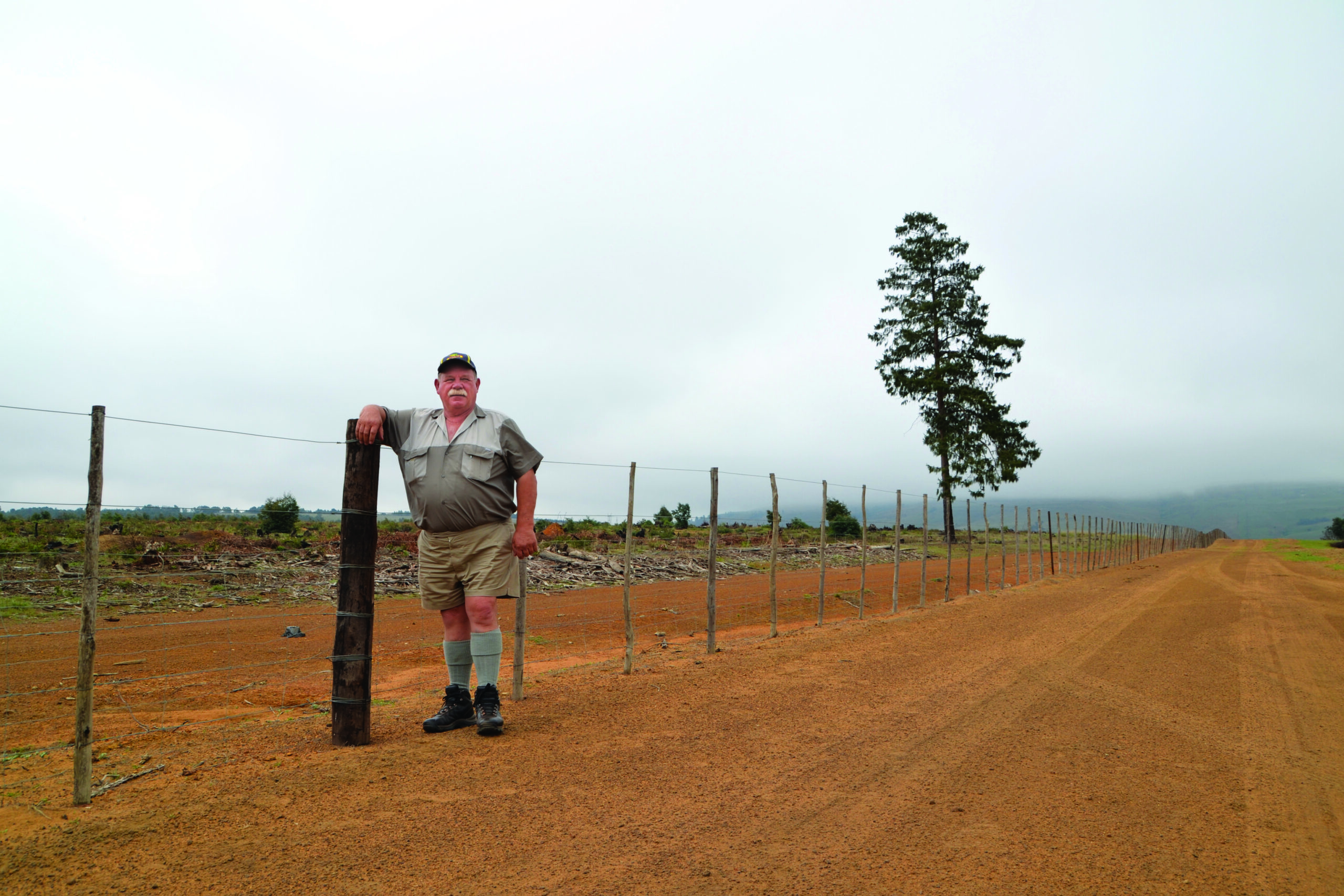Crops that take 25 years before they can be harvested have a long period of vulnerability and should therefore be properly protected. If this product is as valuable as timber, the plantation farmer must have extra eyes in the back of his head to ensure that he will gain a proper harvest… or he can be wise enough to protect his plantations with Bonnox fencing.
Sarel Swart is Manager of JJ Timbers, the forestry department of Busby Saw Mills near Piet Retief. Since he joined the company 26 years ago, they used Bonnox to protect their valuable assets against stray animals. A goat will always try to go through a fence. The Boer goats from the adjoining communities cause big problems when they enter the plantations, and game such as duiker also sometimes gets a craving for a tender young blue-gum tree.
“However, the main threat for a young plantation remains Boer goats,” Sarel claims. They simply devour the young trees. After 25 years, when you harvest your trees, you definitely don’t want to see that you have only 50% or 30% of your plantation left. The risks are too high not to fence in.”
They recently had to erect a new fence and Bonnox was the first choice. Sarel says: “To us plantation owners, Bonnox is no stranger. I have never heard a bad word about Bonnox anywhere. The Bonnox fence on the farm is very old, but still shines like new, and it still does its work properly. It is a superb fence to contain cattle and less labour is needed, while it can be erected quicker. To tie each separate wire of an ordinary fence, demands lots of time and labour. And in the final instance, all revolves around costs.”

A goat on the other side of a Bonnox-fence is a good goat. They cannot jump the fence or crawl underneath to cause damage on this side.
Sarel says you must protect the young trees at all costs for the first two or three years. This will ward of most of the danger, but stray cattle and larger game will still be able to damage the trees, therefore the best solution is to erect a dependable, permanent fence – Bonnox.
Sarel uses treated posts from their own saw mill for the corner posts and supports, and for droppers. “We use 75 to 100 mm wooden posts and thinner poles from 25 to 50 mm thick for droppers. 7 droppers are used every 20 metres. You must plan carefully to provide for roads and gates so that you can enter the camps easily to fight fires and to remove logs with big trucks.”
Recently, Sarel erected 4,5 kilometres of the 900 mm high economy range, and soon he will erect three to four kilometres more on another farm. The Boer goats cannot jump over the fence, but wherever they find ‘n ditch, even as shallow a 15 cm, they crawl under the fence. To prevent this by keeping the fence on the ground, they stack rocks or drive in short stakes to which they tie the wires.
Fence thieves are another problem Sarel has to cope with, but Bonnox offers a degree of confidence. “Thieves show certain tendencies,” he says. “Presently, they concentrate on stealing barbed wire and steel posts. Wooden posts and plain wire are the safest option, as they have less scrap value. Moreover, it takes a long time to cut through Bonnox.” Bonnox offers the best of both worlds and it is a proven fact the Bonnox effectively keeps animals in or out.
Bonnox’s wide range of products makes it very versatile and offers a solution for every problem.
Call Bonnox on 012-666-8717 or 076-169-9068, or send an e-mail to gerda@bonnox.co.za, linda@bonnox.co.za, or zane@bonnox.co.za. Also visit their website at www.bonnox.co.za to get acquainted with their wide range of products and useful information.









